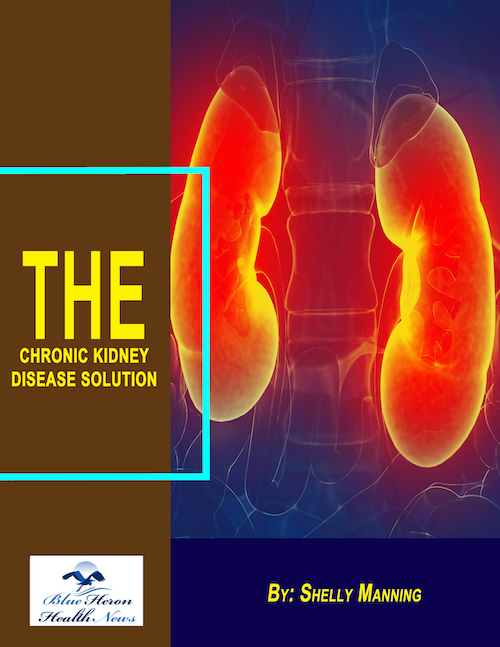
The Chronic Kidney Disease Solution™ By Shelly Manning The information provided in this write-up about The Chronic Kidney Disease Solution, a guide, helps in motivating people to get rid of the chronic problems on their kidneys without using any harmful methods. It eliminates your kidney problem by focusing on the poor health of your gut and inflammation.
What is a dialysis catheter?
A dialysis catheter is a medical device used to provide temporary or long-term access to the bloodstream for hemodialysis treatment. It is a flexible tube that is inserted into a large vein, usually in the neck, chest, or groin, to allow for the removal and return of blood during dialysis.
Key Features and Function of a Dialysis Catheter:
- Purpose:
- The catheter serves as a vascular access point for hemodialysis when other access options, such as an arteriovenous (AV) fistula or graft, are not available or cannot be used. It allows blood to be drawn from the body, filtered through a dialysis machine, and then returned to the body.
- Types of Dialysis Catheters:
- Temporary Dialysis Catheter: Used for short-term dialysis access, often in emergency situations or while waiting for a more permanent access method (like a fistula) to mature. It is usually placed in a large vein, such as the jugular vein (in the neck) or the femoral vein (in the groin).
- Long-term Dialysis Catheter: This type is designed for longer-term use in patients who cannot use a fistula or graft. It may be tunneled under the skin for a more secure and stable placement. It is commonly inserted into the internal jugular vein (neck) or subclavian vein (chest).
- Construction and Insertion:
- A dialysis catheter is typically made of soft, biocompatible materials like silicone or polyurethane, allowing it to remain in the body for extended periods without causing significant irritation or damage.
- The catheter is inserted by a healthcare provider using a needle or guidewire under sterile conditions, often with the assistance of imaging techniques like ultrasound to ensure proper placement in a large vein.
- Dual-lumen catheters: Most dialysis catheters are dual-lumen, meaning they have two separate channels: one for removing blood from the body and the other for returning filtered blood. This helps ensure efficient dialysis.
- How It Works:
- The catheter provides a direct route to the bloodstream, allowing blood to flow from the body to the dialysis machine for filtration and then back into the body after the waste and excess fluids are removed.
- Venous access: The catheter’s tip rests in a large vein close to the heart, such as the superior vena cava, ensuring that blood can be efficiently withdrawn and returned with minimal resistance.
- Complications and Risks:
- Infection: One of the most common risks associated with dialysis catheters is infection. The catheter is inserted into the bloodstream, which provides a pathway for bacteria to enter the body. Proper care and hygiene are necessary to reduce the risk of infections like catheter-related bloodstream infections (CRBSIs).
- Clotting: Blood clots can form in the catheter, especially if it is not used properly or if the catheter remains in place for an extended period. Clots can obstruct blood flow, which may require intervention, such as catheter declotting or replacement.
- Blockages or malfunctions: Over time, the catheter may become blocked or malfunction, requiring it to be replaced.
- Discomfort: Some patients experience discomfort or irritation at the insertion site, especially if the catheter is in place for a long period.
- Advantages and Limitations:
- Advantages:
- Immediate use: Dialysis catheters provide immediate access to the bloodstream for dialysis, making them ideal for emergency situations or for patients who require temporary dialysis while waiting for a fistula or graft to be created.
- Non-invasive: Insertion is less invasive than the surgery required for creating an AV fistula or graft.
- Limitations:
- Infection risk: Because the catheter remains in the body for extended periods, there is a greater risk of infection compared to AV fistulas or grafts.
- Shorter lifespan: Dialysis catheters are not designed for long-term use and are more prone to complications over time.
- Lower efficiency: While catheters provide access for dialysis, they generally offer lower blood flow rates compared to fistulas or grafts, making dialysis less efficient.
- Advantages:
- Care and Maintenance:
- Dialysis catheters require careful maintenance to ensure they remain functional and free from infection. This includes:
- Cleaning the catheter insertion site regularly to reduce infection risk.
- Flushing the catheter with saline or heparin to prevent clotting.
- Monitoring the catheter for signs of infection, blockage, or dislodgement.
- Dialysis catheters require careful maintenance to ensure they remain functional and free from infection. This includes:
Conclusion:
A dialysis catheter provides a critical access point for hemodialysis, particularly when more permanent access options like a fistula or graft are not available or have failed. While it is a lifesaving tool for many patients with kidney failure, it comes with risks such as infection and clotting, and it is generally considered a temporary solution until a more permanent access option can be established. Proper care and management of the catheter are essential to minimize complications and ensure effective dialysis treatment.
The Chronic Kidney Disease Solution™ By Shelly Manning The information provided in this write-up about The Chronic Kidney Disease Solution, a guide, helps in motivating people to get rid of the chronic problems on their kidneys without using any harmful methods. It eliminates your kidney problem by focusing on the poor health of your gut and inflammation.